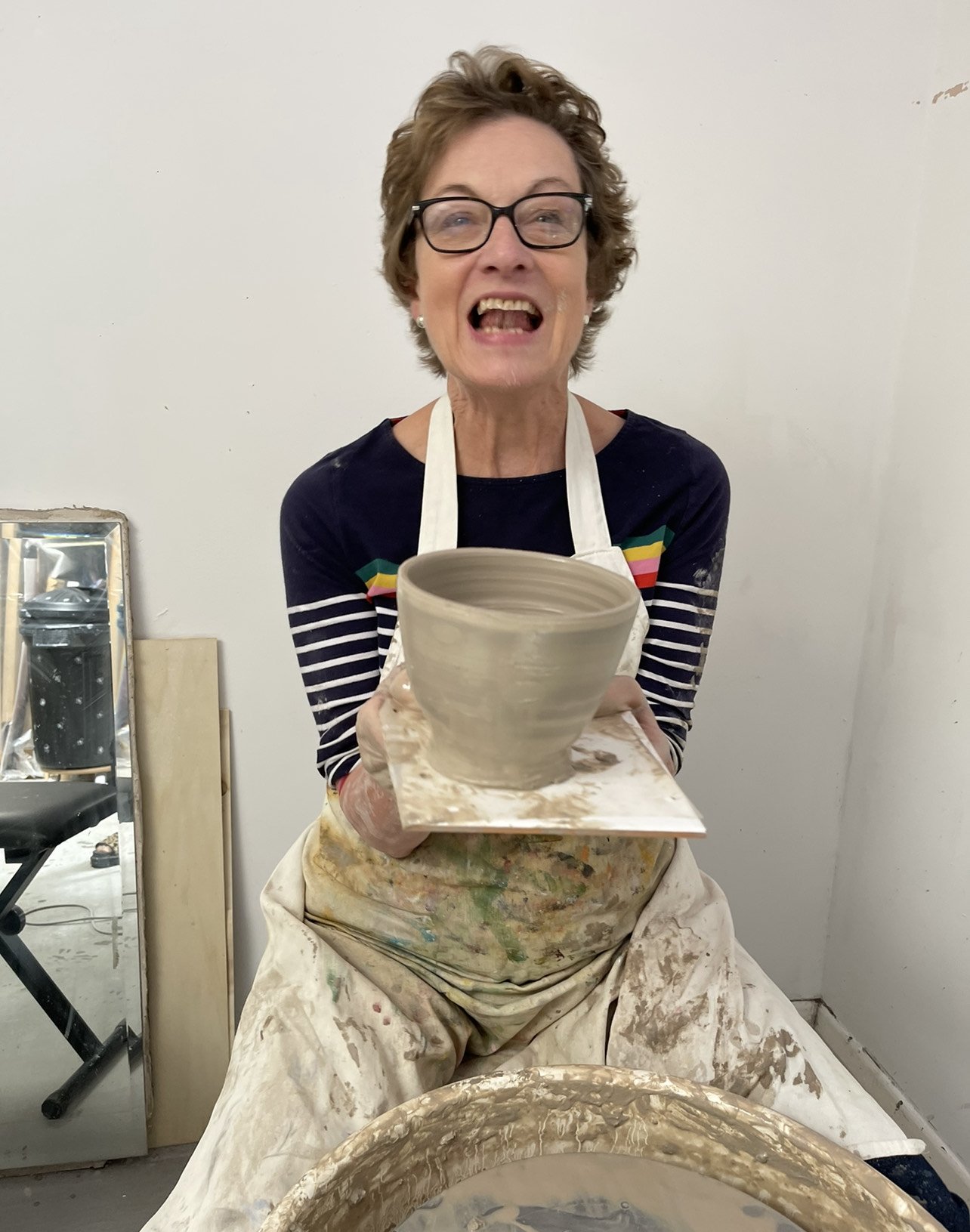
Five Week Introduction to Pottery
with Luke Hamel-Cooke
Spring Term 2025 Course Dates
4, 11, 18, 25 March
1 April
Five Week Introduction to Pottery
This course is perfect for beginners. Students will learn how to throw on the potters wheel, how to trim to achieve a finished result and how to glaze. Students will leave with finished useable pieces. Most people are surprised at how well they do. Completion of this course can lead into a subsequent course to further improve skills. The tutor is an experienced thrower who will guide the students in their journey with clay.
Small groups allow plenty of individual attention to each student.
You should complete the course with several small pieces finished.
The course fee is inclusive of all materials except a small charge for firing.
Course Programme
Week 1: Introduction to Materials and Basic Techniques
• Objective: Familiarize students with clay and basic throwing techniques.
• Activities:
• Introduction: Overview of tools, materials, and workspace safety.
• Clay Prep: Demonstrate proper wedging techniques to remove air bubbles.
• Centering on the Wheel: Introduce centering, the foundation of throwing.
• Practice: Students practice centering clay on the wheel.
• Goal: Get comfortable with the feel of the clay and centering.
Week 2: Pulling Up Walls and Creating Cylinders
• Objective: Learn to pull up walls and make basic cylindrical shapes.
• Activities:
• Review: Quick recap of wedging and centering.
• Demonstration: Show techniques for pulling up walls to create height.
• Cylinder Throwing: Teach how to create simple cylinder shapes.
• Practice: Students make multiple small cylinders.
• Goal: Create a basic cylinder with even walls, focusing on height and thickness.
Week 3: Shaping and Forming Bowls
• Objective: Introduce shaping techniques to form bowls.
• Activities:
• Review: Centering and cylinder basics.
• Demonstration: Show how to open up the clay wider and shape it into a bowl.
• Trimming Basics: Introduce basic trimming techniques for foot rings.
• Practice: Students make small bowls, focusing on creating smooth, rounded forms.
• Goal: Shape a balanced bowl and add a simple foot, if possible.
Week 4: Trimming, Surface Design, and Texture
• Objective: Learn to refine shapes and add surface textures and designs.
• Activities:
• Review: Trimming basics and centering on trimming bats.
• Demonstration: Advanced trimming to refine forms and create smooth foot rings.
• Surface Decoration: Introduce textures, carving, slip application, or other decorative techniques.
• Practice: Students trim previous pieces and add decorative elements.
• Goal: Refine thrown pieces and add unique surface designs.
Week 5: Glazing and Final Touches
• Objective: Complete pieces with glazing and prepare for firing.
• Activities:
• Introduction to Glazes: Overview of types of glazes and application techniques.
• Demonstration: Dipping, pouring, brushing, and other glazing methods.
• Practice: Students glaze their pieces, focusing on consistent application.
• Wrap-Up: Discuss firing processes, care for ceramic pieces, and next steps.
• Goal: Apply glaze to all finished pieces and prepare them for the kiln.
Key Takeaways and Final Review
Each week builds on foundational skills. By the end of this course, students will have completed several pieces, including cylinders, bowls, and mugs, and will have hands-on experience with shaping, trimming, decorating, and glazing






